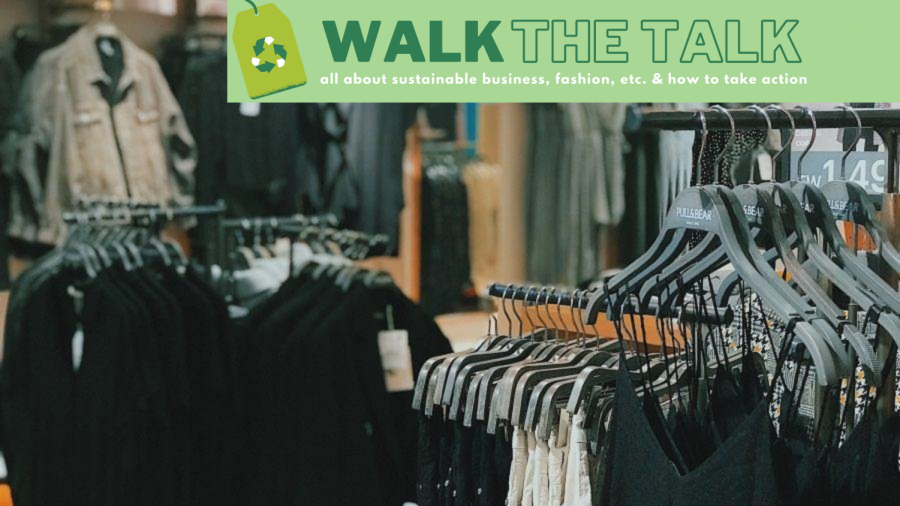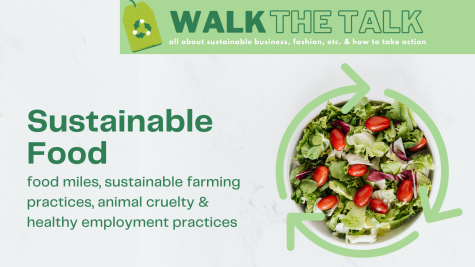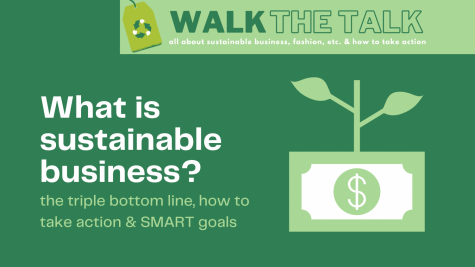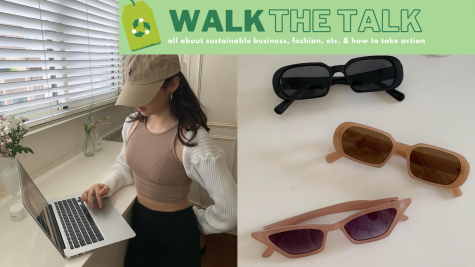WALK THE TALK | Forever 21 might not be forever after all: how TAS students make eco-friendly purchases
WALK THE TALK || After browsing through fast-fashion stores for hours in downtown Xinyi district, you finally found the perfect shirt, so you flip the shirt to glance at the back, but what you find is “fries over guys” printed in large letters. Disappointed, you keep browsing for shirts without awkward and quirky phrases, but the more you try, the more disappointed you become.
If you ever had an experience even remotely similar to this one, then you have experienced the downfall of fast fashion.
Forever 21 was once the leader and fastest growing fast-fashion brand. In 2017, the brand decided to open up six hundred new stores in just three years worldwide. According to a recent survey by B2C, about 75 percent of Gen Z and millennials shop online rather than in stores. Therefore, the decision Forever 21 has made to expand its stores in large numbers would spark the brand’s ultimate downfall.
Fast fashion is made possible through the mass production of trendy items, and the motto is always “quantity over quality.” The goal is focused on maximizing profit by keeping up with the latest trends, through quickly producing them quickly. The business model is based on the idea that consumers are only going to wear an item for a season or two at most. It is actually preferable that the item breaks by that time so that the consumer is ready to buy next season’s items.
Eventually, this production method became highly questionable, customers started noticing the low-quality material fast fashion companies adopt to achieve the dirt cheap and affordable prices. In response, many customers start turning to other, higher-quality clothing brands. Forever 21 went from a $4.4 billion-dollar company, at the top of the fast-fashion game, to now filing for bankruptcy. This almost directly correlated to the downfall of fast fashion.
Stores like Forever 21 closing down shows how little newer generations rely on fast fashion, therefore signaling the rise of a more environmentally friendly sustainable fashion era. The Research Journal Nature states that 1.1 billion tonnes of carbon emission is produced per year from producing clothing. Which is equal to the amount produced by international flights.
Luckily, educated consumers are starting to seek out other ways to save the environment through sustainable fashion.
In Taipei American School, students like Sarahi Zuñiga (‘20) has started thrifting more, “it is a really fun activity to do with friends and a unique way to change up your wardrobe, because the clothes you find are very different from what you will find at a regular store,” she said. Sarahi recognizes the difference in thrifting and going to regular stores, “though fast fashion shops can be more convenient at times, the repercussions outweigh its benefits,” she said.
Teenagers are starting to shop more at second-hand stores, and social media influencers are promoting the idea of thrift shopping increasingly more. This allows for young adults to participate in advancing the next generation into a more sustainable way of fashion.
Buying clothes from fast fashion stores might be less time consuming, but if we stop and think about how much a low-quality t-shirt would pollute the earth, than we would all start thinking of sustainable ways of fashion. Next time when you walk into a fast-fashion store, think twice before buying shirts that have phrases like “call me on your shellphone” printed on the back.


![A myriad of impressive trophies and awards. [ANNABELLE HSU/THE BLUE & GOLD]](https://blueandgoldonline.org/wp-content/uploads/2025/09/Awards2-600x256.jpeg)
![Students' calendars say goodbye to exam week. [ANNABELLE HSU/THE BLUE & GOLD]](https://blueandgoldonline.org/wp-content/uploads/2025/09/Exam-week-600x370.jpg)
![A collection of college flags. [PHOTO COURTESY OF AMBER HU ('27)]](https://blueandgoldonline.org/wp-content/uploads/2025/05/IMG_5029-600x289.jpeg)

![An SAT word cloud. [PHOTO COURTESY OF WORDCLOUDS]](https://blueandgoldonline.org/wp-content/uploads/2025/05/SAT-600x600.jpeg)


